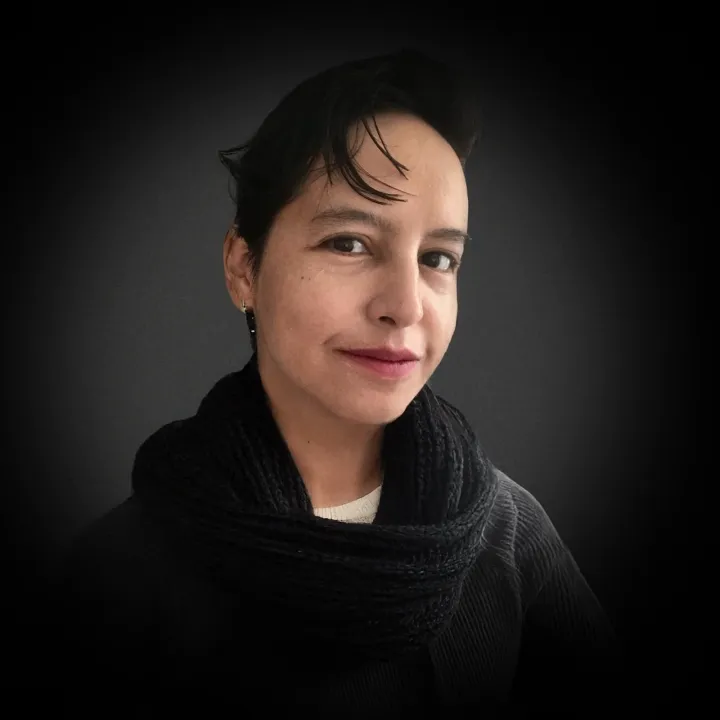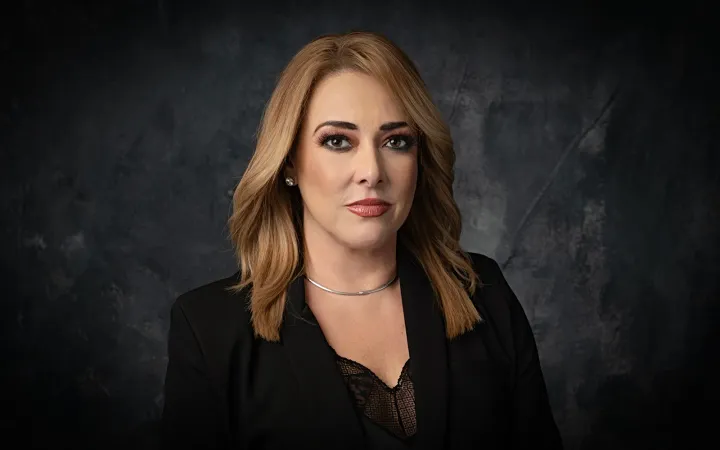Por Yuriria Rodríguez Castro

Al padre Marcelo, asesinado en Chiapas
A las víctimas del crimen organizado
El juicio a Genaro García Luna es insignificante en comparación al lazo destructivo entre México y Estados Unidos que se resume en cómo nos matamos mutuamente a lo largo de la historia de ambos países; es un secreto a voces que las autoridades de las dos naciones solían disimular: que la industria del narcotráfico es la principal fuente de ingresos. Siglos han pasado y la legalidad no es el mejor negocio para mantenernos unidos.
El narcotráfico mexicano logró penetrar en todos los ámbitos de la vida política y social mexicanas, primero se llamó contrabando, fenómeno que hizo florecer a la Nueva España, pues se traficaba con todo en medio de una sociedad hipócrita y puritana, incluso la escritora Sor Juana Inés de la Cruz compraba libros, instrumentos musicales y científicos a los contrabandistas novohispanos, por lo que el Barroco no habría sido posible sin el comercio ilícito y las organizaciones criminales, pero tampoco se habría consolidado ni la guerra de independencia, ni un ejército irregular para la revolución mexicana, que historiadores como Leslie Bethell consideran fue uno de los factores que posibilitó estas luchas armadas.
Pero México se siente orgulloso de lo que produce su violencia hasta el grado de fingir que sus ganancias por turismo se deben a los lugares paradisíacos y las ruinas arqueológicas, con ingresos que ascienden a cerca de 30 mil 809 millones de dólares, algo así como una de las actividades que deja más ganancias en la presumible economía formal, pues según información oficial en este 2024 el turismo representa cerca del 8 por ciento del producto interno bruto (PIB), con todo y huracanes catastróficos en las zonas de más afluencia.
Algo que insisto a mis discípulos es la demostración de que el crimen organizado puede tener actividades no delictivas en la economía formal que no representan delito aparente, pero que están sostenidas por actividades criminales. Aún así, no falta quien se cree la supuesta versión utópica de que la sola belleza de nuestro país atrae al turista extranjero, a quien le vendemos droga fuera y dentro del país.
A continuación veremos cómo los puntos geográficos de más turismo y tradición en México coinciden con las sedes del crimen organizado y una ruta de excesos en regiones sin ley que nos hacen mucho más atractivos que nuestros montones de piedras antiguas y los lugares más paradisíacos que otros países también tienen a un menor costo, sólo que carecen de nuestra oferta de narcóticos y fiesta de violencia ilimitada sin restricción legal: “Sienta la libertad de morir en éxtasis. Somos el país de los muertos en cualquier temporada del año”, tendría que ser el slogan turístico. Así que bienvenidas las remesas de los braceros del narcotráfico que terminan siendo narcomenudistas o lavadores de activos en Estados Unidos, así como todo ese turismo toxicómano que ha atestiguado casos de huéspedes muertos por sobredosis en sus habitaciones, denominándolos “casos aislados”, en vez de investigar a fondo que hicieron los empleados y empresarios hoteleros, así como las autoridades de los gobiernos, para evitar que las drogas lleguen como room service, cual si se tratara de pedir un club sándwich.
El narcotráfico tuvo desde sus comienzos a traficantes en la presidencia mexicana y por eso tiene en el Estado a su progenitor: fue el presidente Abelardo Rodríguez el primer contrabandista estatal que inundó de alcohol a EU durante la Ley Seca en la década de los 20, pero el efímero presidente también extendió el juego y los Casinos en el Hotel Agua Caliente, que algunas fuentes señalan fue parte de sus alianzas con Al Capone, Lucky Luciano y Meyer Lansky. Después llegó Lázaro Cárdenas, quien legalizó temporal y brevemente las drogas, liberando a los narcomenudistas de las cárceles en marzo de 1940, al tiempo que oficializó a Mazatlán como puerto contrabandista —aunque extraoficialmente ya lo era desde el Virreinato— convirtiendo así a toda Sinaloa en el plantío de amapola al servicio de los Marines norteamericanos, sobre esto existe incluso un documento desclasificado con la firma de Cárdenas que publicó el historiador Luis Astorga en su libro Drogas sin fronteras.
La relación interna entre el Estado Mexicano y el negocio del narcotráfico siguió evidenciándose en el árbol genealógico del matrimonio inevitable entre México y Estados Unidos, donde EU siempre había pensado que podía controlar este matrimonio disfuncional, hasta que recientemente el fentanilo es la droga de exterminio más incontrolable y genocida, produciendo más bajas entre los suyos como ninguna otra de sus guerras o pandemias. Si COVID-19 fuera un grupo criminal, se perdería por su ineficacia para terminar con las vidas de los ciudadanos estadounidenses en comparación con las agrupaciones criminales mexicanas.
EU consigue la droga en su país de manos mexicanas por lo menos desde la década de los 90s, basta mencionar a los primeros vendedores de heroína de alquitrán negro —de la peor y más mortífera calidad— que introdujeron los Xalisco boys, de los que da cuenta el periodista Sam Quinones en su libro Tierra de sueños. La verdadera historia de la epidemia de opiáceos en Estados Unidos.
Los Muchachos de Xalisco —del poblado nayarita con ese nombre, región ahora controlada por el Cártel Jalisco Nueva Generación— no solamente exportaban la droga a EU, sino hasta a los dealers, que eran enviados como braceros temporales para distribuir vía mensaje de texto a dispositivo móvil esta heroína que es el antecedente inmediato del experimento con fentanilo, el cual explotarían después los propios hijos del Chapo Guzmán.
Sin embargo, en México también el adicto extranjero y nacional puede conseguir todo tipo de droga. No nos engañemos más; basta mencionar algunos ejemplos como el movimiento hippie y las olas de adictos que convirtieron en su centro urderground sin ley y facilmente sobornable a ciudades fronterizas como Tijuana, Ciudad Juárez, Chihuahua; a otras donde el chamanismo, el hongo, el desnudismo y la marihuana hacían de la toxicomanía algo pintoresco, tal es el caso de Oaxaca en Zipolite y Mazunte, así como la ruta del hongo en el Estado de México y aquella copia de excesos que fue el Festival de Avándaro (Tanantongo, capital del hongo), intentando emular a Woodstock; o puntos geográficos donde el desierto y el peyote prometían un viaje introspectivo en San Luis Potosí, Sonora y Chihuahua; lo mismo pasaba con la marihuana que llegó Veracruz desde la Conquista española proveniente de las regiones de esclavos africanos, o el papel del puerto de Mazatlán en el contrabando que llegaba de Europa, el cual data de la época virreynal; o el de Acapulco con los hippies locales, las discotecas llenas de cocaína primero, luego de heroína y los viajes alucinógenos registrados en la literatura de la Onda; no se diga de la capital mexicana, principalmente de barrios como Tepito que ya era famoso desde la época prehispánica por dedicarse al comercio marginal y el ambulantaje carácterístico de los fayuqueros, el cual después se convirtió en centro de distribución narcomenudista.
Tampoco podemos dejar de lado los fumaderos de opio en el barrio chino del centro histórico del entonces Distrito Federal, hoy Ciudad de México; o los grandes barrios como Tacubaya donde también se comerciaba de todo sin restricción y en cuyas inmediaciones se instaló el manicomio de La Castañeda para aislar entre los locos a los adictos delirantes, así como la colonia Roma donde el turismo sexual de la Zona Rosa acompañó a las drogas desde los años 60s hasta el apogeo de la cocaína en los años 80, basta leer la crónica del periodista mexicano Guillermo Osorno, quien narra la vida nocturna de la Zona Roja convertida en rosa por el armario y la subcultura gay en su libro Tengo que morir todas las noches.
Así es como dejaron de llegar los hippies y los hipsters, ese turismo alternativo de los movimientos contraculturales como la Beat Generation, para dar lugar a el arribo neófito y reguetonero de los sprin breakers: desnudos en las piscinas, bañados en alchohol y drogas, mientras se les ve bailar a ritmo en los hoteles cinco estrellas (all included) de Mazatlán, Cancún, Puerto Vallarta, Oaxaca, así como en playas de Colima y Nayarit; entonces queda demostrado que no son los paraísos naturales y nuestra cultura ancestral uno de nuestros principales atractores económicos; no hay que engañarse más, se trata del turismo de las drogas y las migraciones del narcotráfico.
Cuando fui toxicomana
En mi próximo libro Teoría de Violencia acepto que cuando adolescente, casi niña, fui adicta a las drogas, especialmente a los opiáceos, las metanfetaminas y la marihuana. Me encontraba en el bachillerato de arte cuando tuve que viajar con mi familia a Mazatlán, recuerdo que me dio mucho miedo hacer lo que hice en otras ocasiones de ocultar droga en una toalla sanitaria, en parte porque la dosis no sería suficiente, pero sobre todo porque después del 9-11 todas las revisiones se hicieron más estrictas.
Confieso que me escapé del hotel hacia la zona popular del mercado e iba preguntando sin mucho pudor donde podía conseguir droga y me enviaron a la playa popular. Comenzaba a oscurecer y entre la ansiedad y la adrenalina sudé frio: una menor de edad sola en la playa donde no se veían hoteles cercanos; me quedé parada unos 3 minutos y vi a un lanchero muy cerca, le pregunté si me podía conseguir droga y dijo que sí, incluso me ofreció cocaína, pero temí arriesgar más dinero a que se fuera y no regresara nunca, así que preferí arriesgar comprando yerba; pasaron no más de 20 minutos y regresó con mi encargo.
De regreso al entonces DF, conocí muchas vecindades que tenían la fachada de dedicarse al comercio ambulante, pero vendían de todas las drogas, sobre todo cristal. Aun ahora, completamente rehabilitada, no puedo olvidar que en una de esas vecindades con puertas de armario y cuartos del mismo tamaño que un closet, había una niña tuerta despachando la droga y la jefa de ese grupo de narcomenudistas era una mujer rubia, muy guapa. Ver que esa niña me vendía la droga fue una de las experiencias más dolorosas que me decidió a dar un giro de 360 grados en mi vida, pues me hizo confrontar mi propia infancia atrapada en el el consumo de estupefacientes. Me sincero porque creo que es importante hacer de los cambios personales un ejemplo para quienes piensan que en México no hay adictos, mucho menos adictos nacionales; con esto quiero decir que es muy fácil conseguir droga en México. Lo sé desde entonces y ahora que ya no soy adicta, conozco dealers y sé que las nuevas tecnologías les permiten ocultar mejor sus actividades, así como eficientar tiempos de entrega, pero también sé que esas mismas redes sociales a veces los hacen vulnerables.
Para salir de mis adicciones, antes abandoné la escuela por tres años, me rehabilité con mucha disciplina y terapia, después no sólo acabé la escuela, sino que ese pasado y otro episodio muy trágico en lo personal, me decidieron a convertir esa experiencia en una lucha consciente, intelectual y académica, por lo que me doctoré para especializarme en la investigación de los fenómenos criminales. Pero cuando aún era niña y comenzaba a usar drogas duras como el cristal o el opio, recuerdo etapas de México que parecían irreales, como cuando el presidente Carlos Salinas y luego Ernesto Zedillo, se alinearon a la campaña de la guerra contra las drogas que provenía desde el presidente norteamericano Ronald Reagan hasta la política antidrogas de los Clinton, así como aún puedo recordar las primeras campañas “Vive sin drogas” a ritmo de rap en la televisión mexicana, al tiempo que se desataba la cruzada anti narcóticos y de combate al terrorismo de la dinastía Busch, pero también recuerdo que Raúl Salinas de Gortari, hermano del presidente, fue detenido por enriquecimiento ilícito y lavado de dinero, así como es imborrable para mi memoria el homicidio a Luis Donaldo Colosio y la detención del gobernador de Tabasco Mario Villanueva, por ser considerado un aliado de los narcotraficantes. Todo esto pasaba, mientras mi carrera de actriz infantil se veía truncada por el uso de narcóticos que me empujó a drogarme hasta en terrenos baldíos y callejones oscuros. Tampoco olvido el daño que les hice a mis padres, sobre todo a mi mamá, quien optó por tolerar que me drogara en casa en vez de preocuparse por dónde estaría su hija.
Fue esa década de los 90s el comienzo del caos violento por el tráfico de narcóticos en México, pues también fue en esa etapa confusa cuando sucedió el ataque terrorista en el aeropuerto de Guadalajara que acabó con la vida del Cardenal Posadas Ocampo y donde estuvieron involucradas las primeras organizaciones del narcotráfico transnacionales de los Arellano Félix y el grupo del Chapo Guzmán, quienes en su enfrentamiento con la mafia familiar de los Arellano, rompieron por primera vez el “pacto” con los políticos mexicanos que delimitaba zonas de tolerancia y límites precisos para que la violencia no llegara hasta la sociedad. Ahora sabemos que ese pacto fue abolido. Entre el año 1998 y comienzos del 2000, muchos adolescentes como yo caímos en las adicciones, mientras el discurso oficial era que en nuestro país las drogas sólo iban de paso, pero supuestamente no se quedaban para generar un mercado de adictos, como tampoco atacaban a la sociedad como pasaba en las calles de Colombia donde se atentaba contra blancos civiles. Cómo lamento ahora decir que el crimen organizado se mete con cualquiera de nosotros, tanto, que escribo estas líneas a contratiempo, con la sensación de ir tarde, de que asesinan a quien los denuncia sin poder detenernos a pensar en las bajas. En todo caso, aclaro que mi denuncia no es particular, sino generalizada. Todos somos y hemos sido responsables de este sistema criminal.
Narcotráfico, el hijo pródigo del Estado mexicano
Continuemos con esta historia familiar donde el Estado creó un hijo insolente que se emancipó y ahora, en vez de visitar la casa paterna para llevar algo en retribución al anciano régimen, va y le cobra piso. El crimen organizado es hasta parricida, el ejemplo está en aquel negociador llamado García Luna que hoy cumple sentencia de 38 años en la cárcel de EU.
El Estado mexicano no tuvo nunca una relación sana con su hijo pródigo el crimen organizado; ésta fue como casi toda relación violenta de nuestra cultura familiar, pues se sabe que incluso entre amantes o novios cuando una relación no te deja más que la posibilidad de ser víctima o verdugo, jamás será posible la independencia ni el amor, lo único que podrán compartir son sentimientos de violencia como la culpa, los celos, el miedo, la amenaza, la codependencia, o el “amarre” de quienes hasta practican brujería para mantenerse juntos o separarse con la misma violencia que siempre los unió. Así fue desde el comienzo que el Estado mexicano tenía maniatado con abusos infantiles en un cuarto oscuro a su vástago el narcotráfico, pero un día este niño creció; no podemos decir que maduró, si no que el miedo, el sometimiento y la crueldad que recibió se fue acumulando en resentimiento y un día le demostró a su padre abusador que ya había aprendido lo suficiente como para ser abusador por sus propios medios, entonces intentó ser cruel y violento sin pedirle a papá que fuera su proveedor, esta etapa se dio durante el gobierno de Vicente Fox, cuando el narcotráfico se emancipó sin lograr su independencia, pues sólo demostró que podía suministrar violencia y droga sin permiso del papá, repitiendo y hasta mejorando la violencia que su padre le enseñó.
En ese momento, el hijo parece que ya lo hace todo solo: viola, extorsiona y mata; incluso si es necesario matará al padre, pero sin romper los vínculos con la familia paterna porque en México “la familia es la omertá y es lo más importante”, aunque mate lenta o rápidamente, esa familia que ahora está al servicio de este adolescente retardado y en constante rebeldía, aquella familia que otrora fue su verdugo manipulador al usarlo como su camello —el peón del tráfico de drogas—, ahora está arrodillado y a sus órdenes; ahora cambiaron los roles: el padre Estado es el hijo maltratado y mal querido del narcotráfico.
La del crimen organizado en México es la historia de una revolución emancipadora engañosa, pues en sentido estricto sería la institución más exitosa creada y protegida por el propio Estado en prácticamente todos sus gobiernos: es un hijo que llegó a la edad adulta con sentimientos infantiles y vengativos, es un hijo que ya gana más que el padre, que le da órdenes y lo mueve a su antojo, pero que no es autosuficiente porque aún necesita de la casa paterna para cocinar la droga y moverla con el vecino. Este hijo ahora somete al padre, le cobra derecho de piso en su propio hogar, por lo que no suelta la llave de la casa, del garaje, del transporte y aún recurre al aval de papá. El Estado paterno antes se llamaba PRI, después PAN, ahora MORENA; el primero fue padre biológico, los siguientes sus padrastros.
El hijo no cambia, sigue al mando, el Estado sí, cada vez se degrada más en su ya prácticamente simbólica autoridad política, pues podrán cambiar los gobiernos y partidos, pero cuando tome la silla de la cabecera en la larga mesa de esa casa llamada México, este padre idiota sabe —sea quien sea el que llegue a ocuparla— que al otro extremo estará ese pequeño tirano que el mismo maleducó, ese niño tan abusado como mimado que ahora es quien manda y contra esta relación no hay más que simular que no es suyo, que jamás lo fue, que incluso le pueden sacar una prueba de ADN porque el culpable fue el otro gobierno corrupto, y luego el padre biológico dirá que nunca lo quiso, que fue un hijo forzado, que quien mejor lo adoptó fueron sus padrastros, pero nadie lo va a reconocer como suyo, y en esa eterna negación es que no podremos combatir las causas más demostrables de este padecimiento. Entonces, el Estado de EU que nos pidió ese hijo como prueba de amor para mantener nuestra poderosamente insana relación, seguirá deslindándose de su responsabilidad a puro golpe de juicios ridículos al estilo cinematográfico de El Guasón 2.
Así es cómo uno tras otro chivo expiatorio pagará por todo esto sin resolverse nada de fondo y solo agravará más una crisis de inseguridad y tráfico de drogas que nos deja a ambos Estados un satisfactor ya sea económico o político, por el cual no podremos aceptar responsabilidades mutuas que nos permitan disminuir las pérdidas humanas, las violencias inocultables.
Seguiremos culpándonos gracias a ese enemigo íntimo que es el narcotráfico, ese hijo que nos gobierna con su violencia y su muerte; seguiremos culpándonos sin asumir responsabilidad, seguiremos haciendo de nuestras fronteras una diáspora, seguiremos negando que el terrorismo ya es parte del repertorio de este vástago, seguiremos haciendo una especie de franja de Gaza en cada región mexicana donde el narcotráfico domina, seguiremos ofreciendo corderos en sacrificios para ser condenados en territorio estadounidense, mientras se juzga la vanalidad del mal en García Luna que recuerda aquel Eichmann en Jerusalén y la descripción que de su perversidad buracrática hizo Hannah Arendt.
Serán juzgados otros grises funcionarios y otros pintorescos narcotraficantes, mientras todos gritan extasiados porque la fiesta de las drogas continúe seguirán muriendo los nuestros por la violencia del narcotráfico y morirán allá los suyos con la droga que nuestros narcotraficantes les cocinan y venden para consumir en forma mucho más mortífera, pero mucho más discreta que todos los opiáceos y metanfetaminas juntos.
Será entonces que todo se quede a la sombra de las conciencias genocidas de estos dos Estados paternalistas —México y Estados Unidos— que no quieren acudir a terapia, que no reconocen ser el centro mismo del problema, aunque los problemas están dentro de nosotros y acusar, realizar detenciones y operativos espectaculares no resolverán nada.
EU ya tiene a casi todos los líderes de lo que quedó de los Arellano Félix, a prácticamente todo lo que sobrevivió de los Beltrán Leyva, a casi todo el organigrama de Sinaloa, incluso al tío político de la familia, un irrelevante García Luna, ¿y de qué sirve si estos padres no se auto enjuician?, de nada sirve si estos hijos ya tienen su propia descendencia igual de resentida, con un sometimiento semejante y una autoestima igualmente quebrantada, son estos hijos “célula” quienes ahora están deseosos de empoderarse en un relevo generacional interminable.
Ya no existen los Beltrán Leyva, pero sus hijos Los Ardillos y Los Rojos son como Caín y Abel disputándose rutas y camiones de pasajeros como aquellos que tomaron los estudiantes de Ayotzinapa; ya se acabó la hegemonía de La familia michoacana y en algunas regiones del Estado de México hay células de este grupo (hijos orgánicos) operando en el cobro de piso; en teoría se acabó la mafia sinaloense del Chapo Guzmán y “Los Chapitos”, pero algunos sobrevivientes de la rama familiar de Ismael Zambada podrían disputar con lo que queda de los hijos de Guzmán Loera; han capturado a líderes y operadores del CJNG, pero la estructura sigue consolidándose. Las células descendientes de estos grupos aparentemente extintos, matan líderes religiosos, ganaderos, industriales, activistas ecologistas, periodistas, abogados, jueces, fiscales, decenas de candidatos a alcaldías, y a quienes no pudieron matar antes de la elección, los matan pocos días después como ocurrió con el alcalde de Chilpancingo.
Las agrupaciones criminales de antes y no hace mucho —los Arellano Félix, después el Cartel de Sinaloa, La Familia Michoacana, Los Zetas, Cartel del Golfo y Cártel Jalisco Nueva Generación— se creían posibles en el norte y occidente del país, pero en tan sólo dos décadas ya tuvieron a sus vástagos ahora rebelándose con más violencia de la que ellos mismos pueden infringir en regiones tan impensables como la capital mexicana y más recientemente en El Bajío, así como por increíble que parezca, también en Chiapas y Quintana Roo.
Estos padres del crimen organizado que en su momento mal llamamos “cárteles” —no lo son porque no tienen ni el respeto a una autoridad jerárquica, ni la permanencia de los vínculos que exige una estructura piramidal—, ahora padecen lo que su padre el Estado padeció con ellos y de la misma forma, tampoco pueden controlar a sus múltiples descendientes que se reprodujeron tan sólo en Ciudad de México en La Unión Tepito, Cartel de Tláhuac, Fuerza Anti Unión, Los Rodolfos, Los Canchola, Los Tanzanios, Los Maceros, Ronda 88, Los Molina, Juan Balta, El Maestrín y La Nueva Familia Michoacana, sólo por mencionar algunos, pues más rápido que casi cualquier organismo o sistema, las células criminales se reproducen ganándome en velocidad de pensamiento y escritura.
Son incontables las agrupaciones criminales que ahora hay en todo el territorio mexicano, pues el Cartel de Sinaloa y el CJNG vieron en el auge del fenómeno migratorio global una oportunidad de crecimiento para sus negocios, ya que muchas veces la extorsión deja más dinero que la venta de drogas; así que el ser humano es mercancía para secuestrar y sobornar, ahí donde grupos como Los Pelones, Cártel de Caborca, La Familia Valencia Salgado, Pura Gente Nueva, Los Huistas, Los Maras de la MS-13 y la MS-18, Los Motonetos, el Cartel de Chamula, se disputan una diáspora étnica que se separa y alía a cada rato bajo la denominación de Cartel de Chiapas y Guatemala (CCyG). Aunque parezca casi inimaginable, indígenas chamulas y tzotziles desplazados por las olas migratorias, quienes solían resignarse con abnegación pacifista a casi todo, ahora andan en moto empleándose como sicarios para sobrevivir a la violencia, pues encuentran en aumentarla la única forma de sobrevivir, comer y protegerse.
Veremos cada vez más desfilar “padres fundadores” del narcotráfico de los llamados “carteles” y funcionarios públicos vinculados a actividades criminales en los juzgados americanos porque alguna estrategia como la de Felipe Calderón apostó a que el cartel grande controla al chico y resultó que no, que fue asimétrico y el pez chico se tragó al tiburón, mientras los mexicanos de diferentes regiones siguen muriendo en atentados criminales y los estadounidenses continúan perdiendo la vida por sobredosis de fentanilo.
Los 38 años de prisión a García Luna no serán suficiente ejemplo y cada vez más parece que no hay ejemplo útil para inhibir el surgimiento de un relevo. Siempre hay relevo generacional al servicio del narcotráfico, al servicio de la violencia criminal. Seguramente que mientras escribo estas líneas surge otra célula delictiva más, incluso en los lugares más remotos de México, ahora hasta en zonas no tan urbanizadas como ha pasado con Chiapas. Pobres de nuestros países tan atrapados dentro de sí mismos y abrazando un mismo destino trágico.
Las opiniones expresadas son responsabilidad de sus autoras y son absolutamente independientes a la postura y línea editorial de Opinión 51.






Comments ()